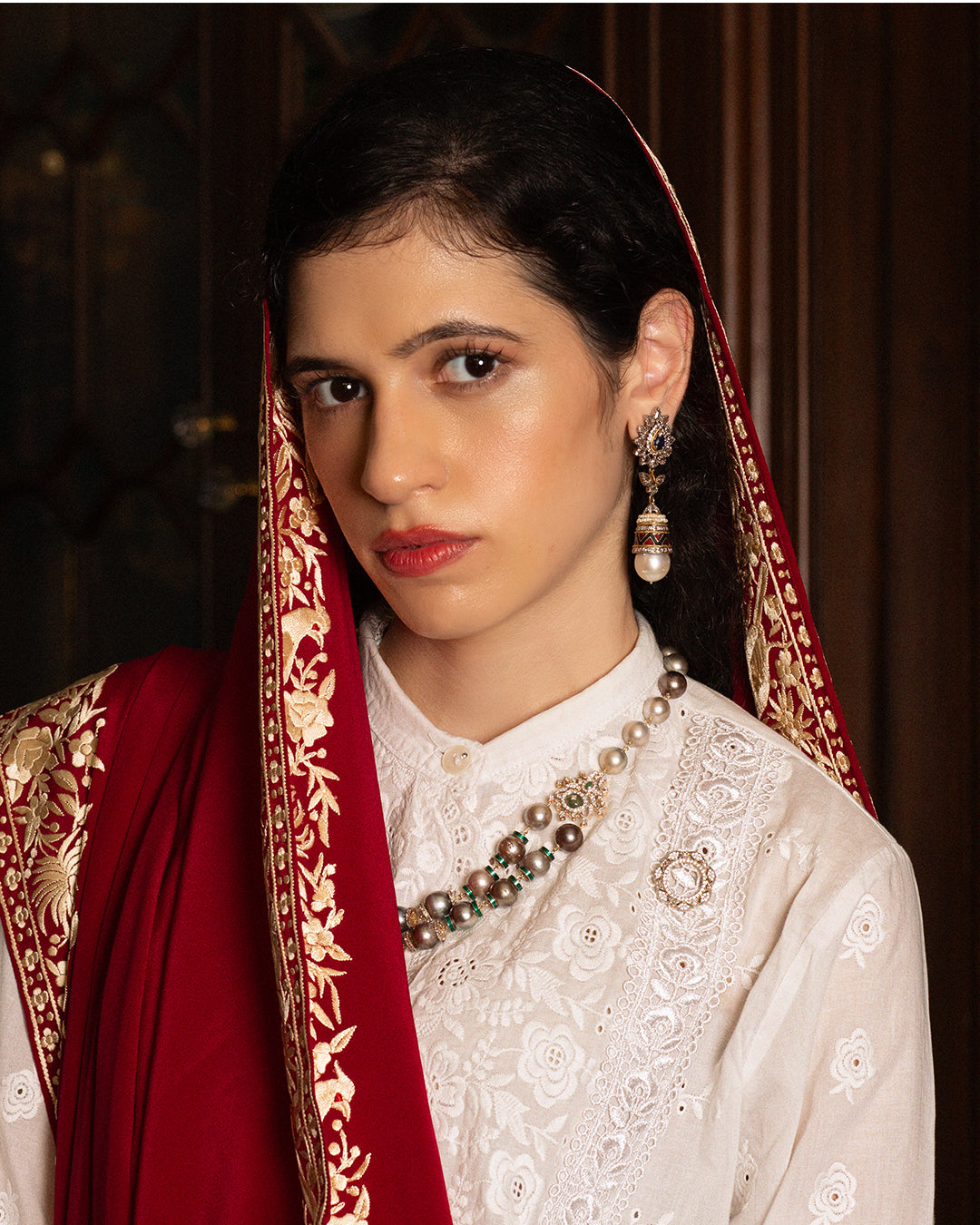Using coins as jewelry objects, known as Gemme Numari—coin gems or nummary gems—dates back to Ancient Rome. As people traveled around the world, the coins they collected made wonderful souvenirs that they could use to make jewelry pieces such as necklaces and rings. This old practice of making coin jewelry, especially coin necklaces, continues to endear the global taste even centuries later.

Image courtesy: Getty
India and Nummary Gems
Coins may appear to be purely decorative elements in Indian jewelry and costumes at first glance; however, as is characteristic of Indian culture, almost every component in jewelry has more than ornamental relevance, and coins are no exception. Coins are evidently a symbol of prosperity. An individual who uses coins as jewelry must have surplus wealth. Because coins in jewelry are visible to others, they add value to the wearer's reputation.
The round shape of the coin and its size make it an object ideal for use in jewelry, particularly necklaces. Furthermore, because the coins were made of valuable metal, they could be used as metal permits. Only in the last hundred years or so has the notion that a coin is damaged if it is modified by a hole or additions are soldered to it been established. Though this practice reduces the numismatic or actual monetary value of the coin, such coins are no longer considered a currency but rather precious metals.

Image courtesy: Victoria and Albert Museum
Coins used in jewelry, be it necklaces or rings, are commonly thought of as amulets, not just because of the value of the metal from which they are made, but also because of the images stamped on them. Old coins issued by the south Indian kingdom of Vijayanagar depicting figures of Hindu gods and goddesses and/or their symbols are examples of the latter.
The majority of the coins minted in Muslim- or Mughal-ruled Indian states lacked figural motifs in favor of Arabic or Persian lettering. These frequently contained verses from the Qur'an or other important passages from Islamic scripture. The presence of such a religious engraving considerably increases the coin's worth in the eyes of Muslims, which accounts for the widespread Muslim practice of wearing such coins as amulets.

Image courtesy: The Met Museum
Coin Necklaces in Indian Culture
Of all the numerous types of jewelry, necklaces utilize the most coins. They might be densely strung in a sequential or overlapping series, or they can be evenly dispersed on a cord that is braided to hold them in place, such as in the Haari, the Tibetan coin necklace.
Distinct regions of the country have different names for coin necklaces. Rupee-coin necklaces are known as Henkal or Hamail in Punjab and Rupaya Haar in Rajasthan. In Tamil Nadu, a necklace made of 30–40 quarter-rupee-sized gold coins attached to a gold necklace is known as Kasumalai. Any necklace with a predominance of coins (Kasadi) bears the latter designation. A striking proof of their early use in jewelry like necklaces is the attachment of loops to ancient coins of gold and silver issued by various rulers.

Image courtesy: Saffron Art
Indian Necklaces Using British Coins
Traditional Indian necklaces frequently contain silver coins that were produced throughout the nineteenth-century British era of dominance in India and up until the country's independence. Their weights and values were seen to be so trustworthy that even isolated tribal people preferred to use them in India.

A traditional silver coin necklace made of up one rupee denominations using George V silver coins, strung on a flexible chain of thick silver wire with alternating floral motifs in silver.
Source and image courtesy: Saffron Art
With reference to the British East India Company, these coins were known as Kampani, and the necklace constructed of them was known as the Kampani Mala. It was a component of the traditional jewelry worn by Nepalese women from the Rai and Limbu cultures, where it was also known as Haari. The label continues to exist when post-Company British Raj silver coins are mentioned in jewelry today.




















